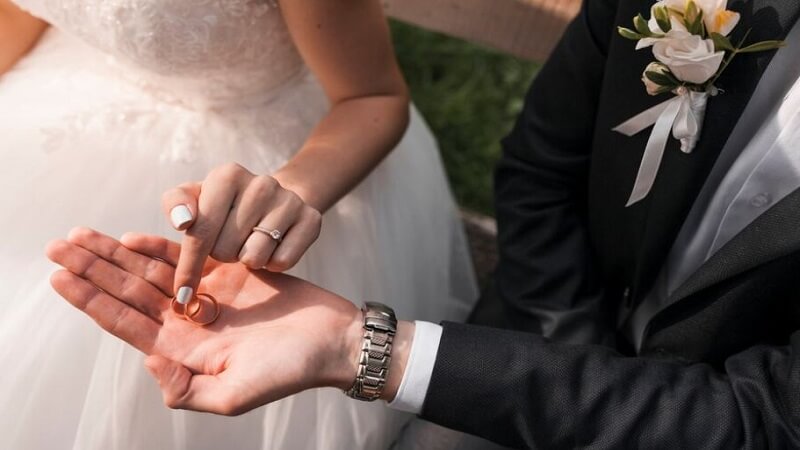The Victorian era, which spanned from 1837 to 1901 under the reign of Queen Victoria, was a time of great cultural, social, and artistic transformation. One of the most fascinating relics from this period is the Victorian engagement ring, a symbol of love, commitment, and style that reflects the romantic spirit of the era. The engagement ring, an important tradition for many couples today, had a particular meaning and charm during the Victorian period. Let’s take a closer look at the history and distinct features that made these rings timeless symbols of affection.
The Romantic Influence of Queen Victoria
Queen Victoria’s deep love for her husband, Prince Albert, greatly influenced the jewelry of the time. Their marriage in 1840 was one of the most significant royal events, and Victoria’s fondness for sentimental jewelry created a ripple effect across society. Engagement rings from this era often featured romantic motifs like hearts, flowers, and snakes, symbolizing eternal love. In fact, the snake motif was popularized after Prince Albert gave Victoria a snake-shaped engagement ring, which was said to symbolize wisdom and eternity.
Victorian engagement rings during the early years of her reign, known as the “Early Victorian” or “Romantic” period, typically featured intricate designs and the use of colored gemstones such as emeralds, rubies, and sapphires. Diamonds were also common but often used alongside these colored stones, adding vibrant character to the pieces.
The Influence of the Industrial Revolution
The Industrial Revolution brought about significant changes in the way jewelry was produced. Victorian engagement rings were no exception to this trend. With advancements in manufacturing techniques, jewelers were able to create more intricate and elaborate designs at a faster pace and lower cost. This meant that more people could afford beautiful engagement rings, making them more accessible beyond the wealthy elite.
The Industrial Revolution also contributed to a wider variety of settings and styles. One of the innovations of this period was the use of the claw setting, which allowed diamonds and other gemstones to be elevated and more prominently displayed. This setting became especially popular in the later years of the Victorian era, emphasizing the importance of the center stone in an engagement ring.
The Middle Victorian Era: Mourning Jewelry
The middle part of the Victorian era was marked by a more somber tone, influenced by Prince Albert’s death in 1861. Queen Victoria entered a long period of mourning, and this greatly affected the style of jewelry during this time. Mourning jewelry became a common trend, with black onyx, jet, and dark-hued gemstones like garnets becoming prominent in Victorian engagement rings.
Despite the more subdued aesthetic, rings from this period were still highly ornate, featuring detailed engravings and symbolism. Sentimentality remained a strong theme, with motifs like forget-me-nots and ivy leaves representing everlasting love and fidelity.
The Late Victorian Era: The Rise of Diamonds
Toward the end of the Victorian era, the discovery of diamond mines in South Africa in the 1870s led to a significant shift in engagement ring styles. Diamonds became more widely available, and as a result, they took center stage in Victorian engagement rings. The solitaire diamond engagement ring, which is still popular today, began to emerge during this time.
Late Victorian rings were often set in yellow or rose gold, and many featured intricate filigree work or scroll-like designs. Some rings from this period also incorporated elements of nature, such as floral motifs or vine-like engravings, reflecting the naturalistic trends of the late 19th century.
Victorian Rings as Timeless Heirlooms
Victorian engagement rings are cherished for their historical significance and exquisite craftsmanship. Their romantic symbolism and intricate detailing make them a timeless choice for those who appreciate vintage and antique jewelry. Whether adorned with colored gemstones or shimmering diamonds, Victorian rings offer a glimpse into the past, where love, sentimentality, and beauty were expressed through every intricate design.
Today, these rings are sought after by collectors and couples alike who wish to embrace the elegance and charm of a bygone era. With their rich history and unique styles, Victorian engagement rings remain a treasured piece of jewelry that continues to captivate the hearts of those who wear them.
In conclusion, the history of Victorian engagement rings reflects the beauty, romance, and cultural shifts of the 19th century. From the sentimental early designs to the diamond-dominated styles of the late Victorian period, these rings provide a beautiful glimpse into the past while continuing to inspire love stories today.
